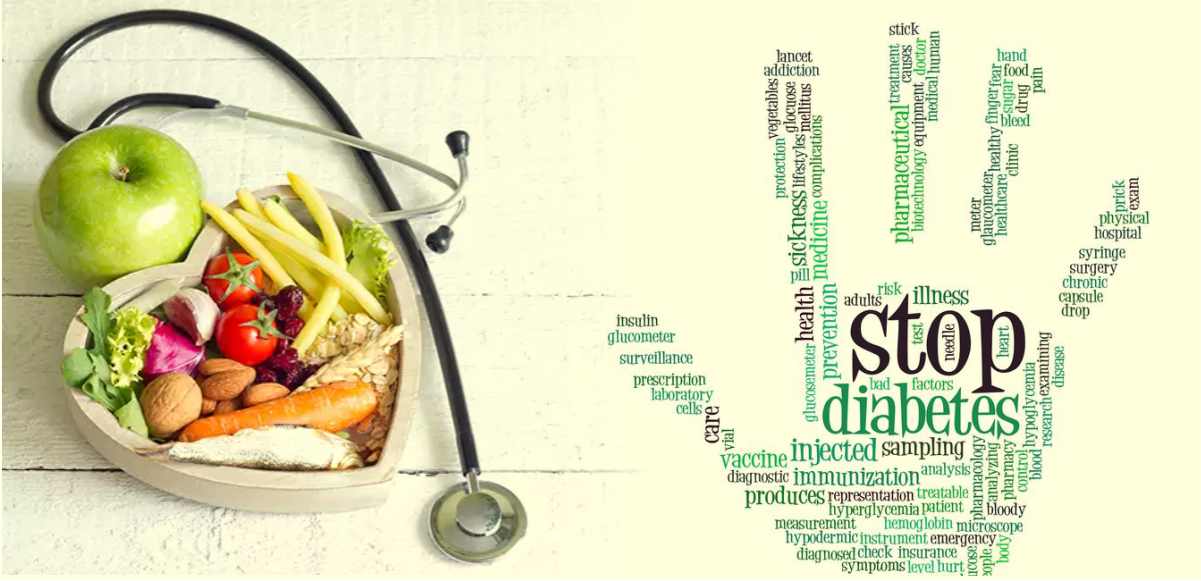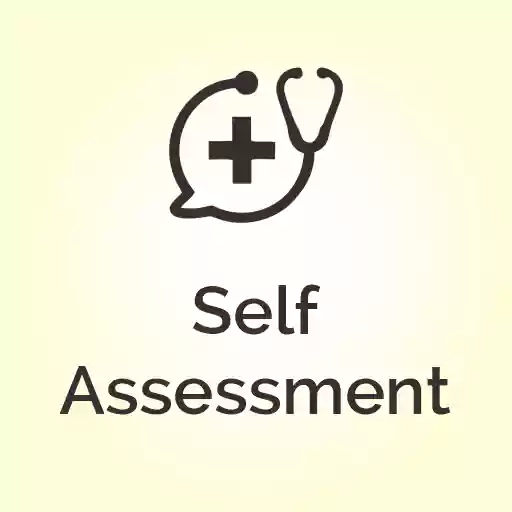Introduction
Diabetes occurs when the pancreas stops/reduces making insulin (a hormone that helps your body turn glucose into energy). The food you eat is broken down into glucose which travels via blood and is taken up by all the body cells to convert into energy for the body to be utilised. When insulin is not available the cells cannot take up glucose from the blood. Hence, an increase in glucose levels in your bloodstream is the root problem that leads to diabetes disease. A diabetic patient’s body is unable to utilise glucose from food to get energy. There are three types of diabetes: Type 1 Diabetes, Type 2 Diabetes and Gestational Diabetes. Uncontrolled diabetes may damage your heart, kidneys, eyes and nerves leading to complications like diabetic neuropathy, diabetic nephropathy, etc.
Causes Of Diabetes Disease
Let’s take a look at diabetes causes: Causes of Type 1 diabetes: Your immune system starts considering insulin-producing cells as foreign objects. It attacks and destroys them in the pancreas. As a result, insulin cannot help convert glucose to energy. Hence, the amount of glucose in the blood increases. This autoimmune response can be genetic or triggered by a virus attack. This type is usually seen in younger people and is early in onset. Causes of Type 2 Diabetes: Your body's cells become insulin-resistant, or the pancreas is not able to produce enough insulin. Thus, glucose levels rise in the bloodstream. Unhealthy lifestyle like sedentary routine and habits like smoking, alcohol consumption, and obesity are majorly responsible for this resistance as they increase glucose levels in the blood, for which the body is not able to produce sufficient insulin. This type is usually seen in older individuals and is late in onset. Causes of Gestational Diabetes: During pregnancy, your placenta produces hormones that make your body cells resistant to insulin. This is usually seen in elderly, obese pregnant women. Polycystic Ovary Syndrome (PCOS): PCOS is caused due to hormonal imbalances. Women who have PCOS are at a higher risk of developing diabetes disease.
|
Causes Of Diabetes DiseaseLet’s take a look at diabetes causes:
Causes of Type 1 diabetes: Your immune system starts considering insulin-producing cells as foreign objects. It attacks and destroys them in the pancreas. As a result, insulin cannot help convert glucose to energy. Hence, the amount of glucose in the blood increases. This autoimmune response can be genetic or triggered by a virus attack. This type is usually seen in younger people and is early in onset.
Causes of Type 2 Diabetes: Your body's cells become insulin-resistant, or the pancreas is not able to produce enough insulin. Thus, glucose levels rise in the bloodstream. Unhealthy lifestyle like sedentary routine and habits like smoking, alcohol consumption, and obesity are majorly responsible for this resistance as they increase glucose levels in the blood, for which the body is not able to produce sufficient insulin. This type is usually seen in older individuals and is late in onset.
Causes of Gestational Diabetes: During pregnancy, your placenta produces hormones that make your body cells resistant to insulin. This is usually seen in elderly, obese pregnant women.
Polycystic Ovary Syndrome (PCOS): PCOS is caused due to hormonal imbalances. Women who have PCOS are at a higher risk of developing diabetes disease.
|
Symptoms of Diabetes Disease
Diabetes symptoms vary from person to person and may include:
![]()
![]()
Diabetes symptoms vary from person to person and may include:
Extreme thirst and hunger | Frequent Urination | Sudden weight-loss | Blurry vision | Leg pain
Fatigue | Dry, itchy skin | Dry mouth | Women may develop urinary tract infections or vaginal yeast infections
A person may develop Diabetic Ketoacidosis (DKA) if blood sugar levels become extremely high. In this situation, they may suffer from the following symptoms:
Nausea | Uncoordinated muscle movements | Drowsiness
Trembling or dizziness | Laboured breathing | Bad breath
However, most people with diabetes are asymptomatic. It goes unnoticed until routine diagnostic tests are done where it gets accidentally discovered. Hence it’s important to screen for diabetes periodically.
Diagnosis of Diabetes DiseaseA diabetes diagnosis can be made by checking glucose levels via blood tests: Fasting Plasma Glucose Test: Generally conducted in the morning after overnight fasting. 126 mg/dL or higher fasting glucose level suggests diabetes. Normal level is below 100 mg/dL. Any concentration between 100 to 126 mg/dL indicates pre-diabetes. Random Plasma Glucose Test: It is conducted randomly without any fasting requirement. Blood sugar level above 200 ml/dL indicates overt diabetes. Postprandial Plasma Glucose Test: It is conducted 2 hours post meal to assess the uptake of glucose by cells post meal. Patients having 200 mg/dL and above blood glucose level in this test are diabetic. 140 to 200 mg/dL is a sign of pre-diabetes whereas blood glucose level below 140 mg/dL is normal. A1c Test or HbA1C or Glycated Hemoglobin Test: Calculates average blood glucose level over the past two to three months in a single test. No fasting is required. This is the most important test to assess the level of control in diabetics. Two individual tests indicating 6.5% or above A1c level shows that you have diabetes. Prediabetic patients have this between 5.7% to 6.4%. A1c level below 5.7% is normal. Gestational Diabetes Tests: During pregnancy, two tests are conducted. Measuring parameters for both of them is the same as the Postprandial Plasma Glucose Test.
Type 1 Diabetes Test: Blood and urine samples are tested to check for presence of autoantibodies (an autoimmune sign that shows that your body is attacking itself) and the ketones (a sign that your body is burning fat as its energy supply) respectively. |
Treatment of Diabetes Disease
You need to consult an endocrinologist and a General Internal Medicine if you experience any symptoms of diabetes. They will prescribe medication and dietary changes based on the severity of your condition.
Medical Treatment
Here are some medical treatments recommended for diabetic patients:
Insulin Dosage: Pancreas completely stops making insulin in type 1 and in type 2 diabetic patients the amount of insulin produced is insufficient. Hence, it’s artificially manufactured form is given to patients either through injections or insulin pumps (a computerized device inserted in the body through a tube). This may be required in type 2 diabetes mellitus as well if it is not getting controlled by oral anti diabetic medications.
Oral Drugs and Medicines: Prescribing oral anti diabetic medicines is the first line of treatment for Type 2 Diabetes Mellitus. Following are some of the drugs administered by doctors in case of Type 2 diabetes:
- Medicines to increase insulin production like chlorpropamide, glimepiride, and glipizide.
- Drugs that block carbohydrate breakdown by stomach and enzymes in intestines such as Glumetza, Fortamet, etc.
- Metformin is the most commonly used drug to reduce sugar production in the liver and enhance insulin uptake by cells reducing insulin sensitivity.
- SGLT2 inhibitors like canagliflozin, dapagliflozin, empagliflozin, etc to stop the kidney from reabsorption of sugar into blood.
- Acarbose and miglitol to reduce intestinal sugar absorption.
Other not so popular treatment options are as follows
Organ Transplantation: Since diabetes impacts the insulin production in pancreas, patients having type 1 diabetes can opt for pancreas transplantation. However this is only recommended if the disease gets out of control because you may have to take immunosuppressants for the rest of the life to avoid organ rejection by the body. These immunosuppressants cause side-effects like nausea, loss of appetite, hand shaking, etc.
Bariatric Surgery: Surgeons make changes to your digestive system so that it reduces nutrition absorption in your body. It is recommended to obese patients of type 2 diabetes having 35 or higher body mass index.
|
Take prescribed medication and insulin regularly. |
Monitor your glucose level at home regularly. |
|||
|
Start exercising and lead a healthy lifestyle. |
Quit smoking and drinking. |
| Take prescribed medication nd insulin regularly. | |
| Monitor your glucose level at home regularly. | |
| Start exercising and lead a healthy lifestyle. | |
| Quit smoking and drinking. |
Lifestyle Measures
Diabetes cannot be cured, but it can be controlled and prevented by following certain lifestyles changes:
- Take prescribed medication and insulin regularly.
- Monitor your glucose level at home regularly.
- Start exercising for at least 150 minutes per week.
- Lead a healthy lifestyle, go to therapy or support groups, practise any activity that you like as a hobby to manage stress.
- Eat vitamin B6, B12, C, E and H, magnesium and chromium rich food such as green vegetables, fresh fruits, grains, nuts, etc.
- Quit smoking and drinking as they increase the stress level and weaken the liver.
Assurance by NanoHealth Disease Management ProgramAssurance by NanoHealth helps in timely identification, diagnosis and treatment by pairing you with the right care providers. Our disease care management programs include: 1. Regular interactions with your health coach for treatment adherence. Assurance is with you every step of the way until maximum health and wellness are achieved. |

Diabetes mellitus is chronic and needs a lot of attention. Follow the article to know the types of diabetes, its causes, prevention and treatment.

For women with diabetes, there are a few things to consider before conceiving. Read on to learn more about women’s health and how to get pregnant when you have diabetes.

Women may have high blood sugar levels between the 24th and 28th weeks of pregnancy. This condition is called gestational diabetes mellitus or gestational diabetes.

Eating the right vegetables can help you keep your diabetes under control. Read more to learn about the 7 vegetables that are best for diabetes.


















